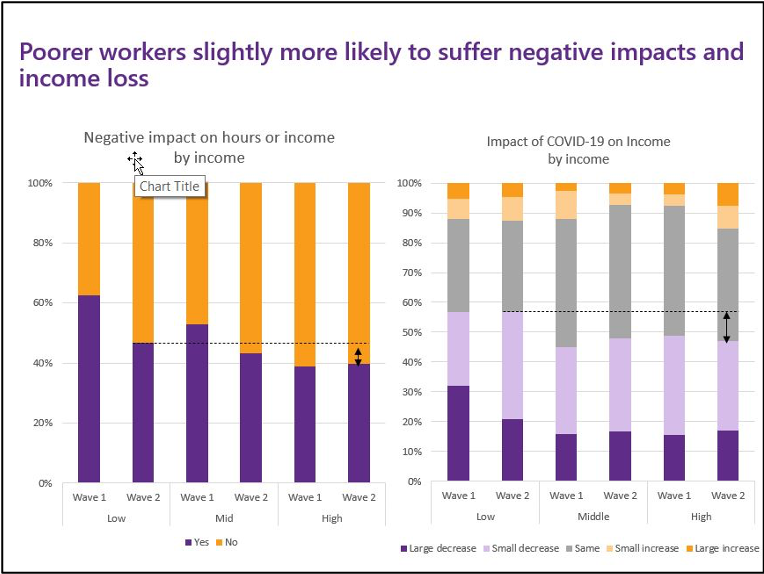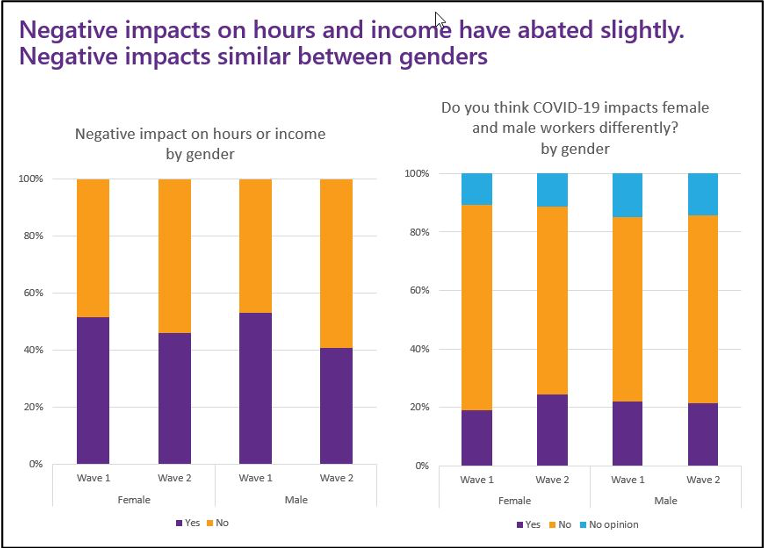
Effectiveness of Working from Home during pandemic COVID-19
December 13, 2023
Successful Implementation of Flexible Working Arrangements – L’ORÉAL INDONESIA
December 13, 2023A total of 57 percent of low-income employees, which is below Rp 5 million per month, experienced a pay cut during the pandemic. This figure is greater when compared to employees earning above Rp 10 million per month with 47 percent experiencing a pay cut.
This figure was obtained through a survey on the impact of COVID-19 on private employees in Indonesia. The survey was conducted on two waves in May and December 2020. A re-survey in December 2020 was conducted to understand how pandemics affect employees after almost a year of living with COVID-19.
Furthermore, working time and employee salaries have returned to normal as before the pandemic, but the impact of the pandemic on their earnings is as great between the surveys in May and December 2020.
“All hotel and restaurant workers surveyed had a negative impact on their working hours and income; these workers are more likely to be women,” said Nizma Fadila, Research Manager of Indonesia Business Coalition for Women Empowerment (IBCWE).

Nizma also explained that in the second half of 2020 the proportion of workers who experience a negative impact on their jobs drops slightly to about half. Employees who experience suspensions start working again. Even so, as many as 26 percent of employees still experience a reduction in working hours and salaries.
“Of these, female employees experienced the most reductions in working hours by 30 percent compared to 22 percent of men who experienced a reduction in working hours,” she said.

From the diagram above it is explained that both male and female employees have experienced negative impacts on their working hours and income with approximately the same figures. These results are surprising given that data from many countries, including Indonesia, show that women experience a greater impact than men during pandemics.
For example, women are more likely to work in the health sector, and in industries where termination rates are relatively high, such as tourism, non-permanent employment, and the informal sector.
“Just like the early phases of the pandemic, women are more affected than men. The survey also showed 25 percent of women and 21 percent of men believe pandemics have more of an impact on women. This is due to the burden of women at home, especially children who have to go to school from home. Also, women are more susceptible to disease, especially pregnant women,” she said.
Impact of Workplace and Home Conditions
Both men and women spend more time caring for sick adults and relatives (possibly COVID-19 or because workers avoid taking sick relatives to the hospital) compared to childcare or accompanying children to study.
This is different from the trend seen in other countries where parents spend more time on childcare and learning assistance due to school closures during the pandemic.

“This data does not show the absolute value of the time women and men spend on caring responsibilities, only trends before (wave 1) and after (wave 2) of COVID-19. Other data shows that women already spend more time caring than men before COVID-19. So any increase in time spent on these activities is above existing inequality,” she said.
In the second wave of surveys, employees have started to return to work from the office. This figure increased from 52 percent in May 2020 to 66 percent in December 2020. Workers in the field of services, such as in the information media, IT, or public services are still working from home. This is in line with the experience in other countries and reflects the fact that this type of work is easier to do from home.
This reflects the fact that the reason most employees who work at home during the pandemic work from home is a government or corporate mandate, not because they have chosen to work flexibly.
Women are only slightly more likely to work from home, while there is no difference in work location between parents and non-parents. This emphasizes pre-pandemic trends in many countries where these groups are more likely to work flexibly, for example by working from home.
Headline Photo by Ahsanjaya from Pexels
15 July 2021
Fellicca P. Madiadipura





